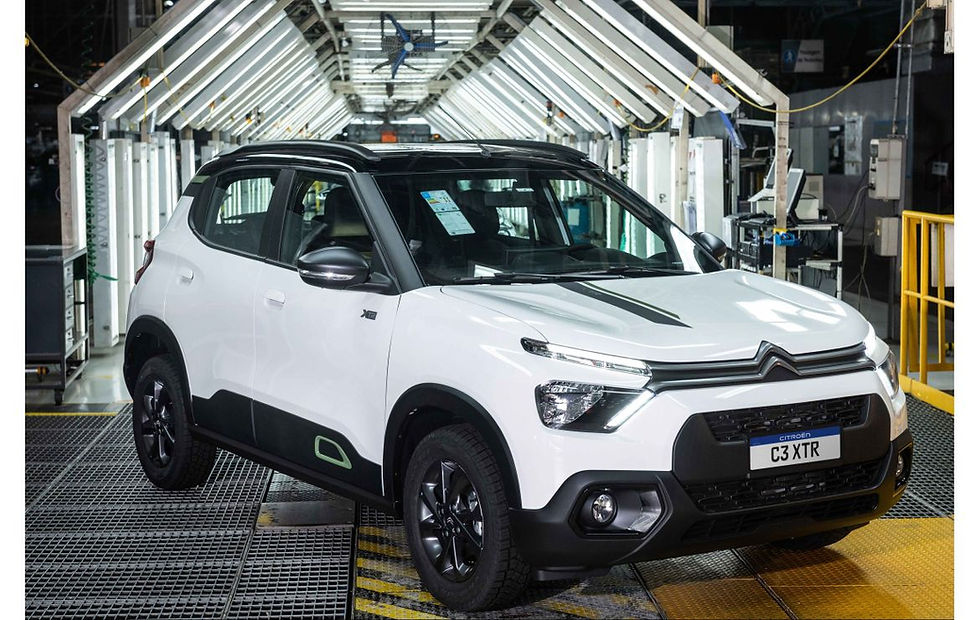Citroën C5 Aircross: Abandonment of thermal engines in the Netherlands, the beginnings of the future?
- Jérémy

- Sep 24, 2024
- 3 min read

With reduced CO2 emission limits coming into force in Europe from 2025, car manufacturers are being forced to adapt their product ranges. The Citroën C5 Aircross, the brand's iconic SUV, will now be offered exclusively with electrified engines in the Netherlands. A move that could mark a turning point for the entire European market as CAFE (Corporate Average Fuel Economy) standards become more stringent. This strategic shift could foreshadow Citroën's future in terms of engines across Europe.
A revised and better equipped range
From production in October, the Citroën C5 Aircross is back in the Netherlands with a simpler but richer offer. The range is now reduced to two versions, PLUS and MAX, both generously equipped and designed to offer the best in comfort and technology.
The PLUS version focuses on a perfect alliance between comfort and modernity. It includes a reversing camera with Top Rear Vision, a dual-zone automatic air conditioning system with activated charcoal filter to improve air quality and Citroën's famous Advanced Comfort seats. Special attention has also been paid to the driving experience with the Citroën Advanced Comfort suspension, synonymous with smoothness on the road, and stylish features such as tinted windows and 18-inch Swirl alloy wheels. The technological interface is not neglected either, with a 10-inch colour touchscreen compatible with Apple CarPlay and Android Auto.
The MAX version goes even further in terms of luxury and functionality. In addition to the PLUS features, it offers Alcantara trimmed seats, an electrically adjustable driver's seat with memory function and advanced safety systems such as Adaptive Cruise Control with STOP & GO function and High Beam Assist. Black roof bars and 18-inch Pulsar wheels enhance the C5 Aircross's dynamic and contemporary design.
Transition to electrification: the end of combustion engines for the C5 Aircross
For this new version of the C5 Aircross in the Netherlands, Citroën has decided to focus exclusively on electrified engines in response to increasing environmental regulations. Petrol and diesel combustion engines are therefore out of the question in this country. Instead, consumers will be able to choose from three hybrid engines: the Hybrid 136 ë-DCS6, the Plug-in Hybrid 180 ë-EAT8 and the Plug-in Hybrid 225 ë-EAT8.
These electrified engines not only meet environmental requirements, but also reduce fuel costs and provide a smoother ride. By focusing on hybrid and plug-in hybrid engines, Citroën is preparing for future European regulations that will require a drastic reduction in CO2 emissions.
The electric C5 Aircross also offers significant tax benefits in the Netherlands, reducing the rent to €259 per month, especially for professionals. A way to attract companies and those who want to reduce their costs while respecting new environmental standards.
A specific case in the Netherlands... for now
Although this transition to electrified engines only concerns the Dutch market for the moment, it could well be a harbinger of future strategic choices for Citroën in Europe. With the new CAFE standards coming into force in 2025, manufacturers will be forced to electrify their ranges in order to comply with the CO2 emission quotas imposed by the European Union, which will fall from 95 grams of CO2 to 81 grams. The case of the C5 Aircross in the Netherlands could therefore herald a similar development in other countries in the short or medium term. Meanwhile, the brand's large SUV remains available with thermal engines in other European markets, notably France, but this gradual shift towards electrified vehicles is a trend that should become more widespread in the future.






Comments